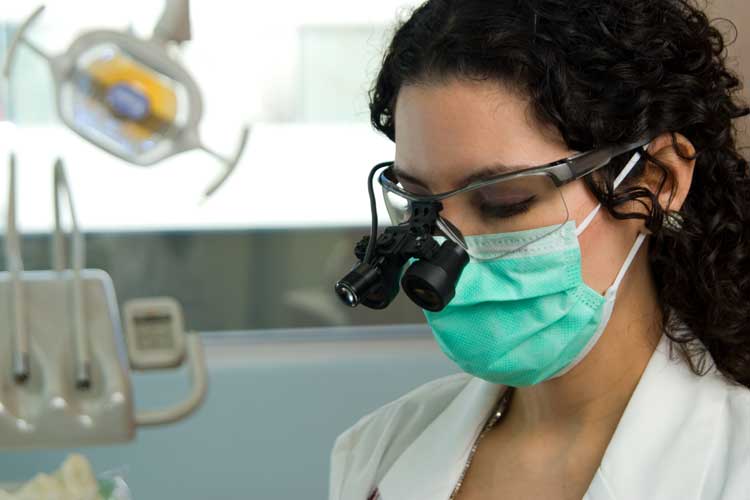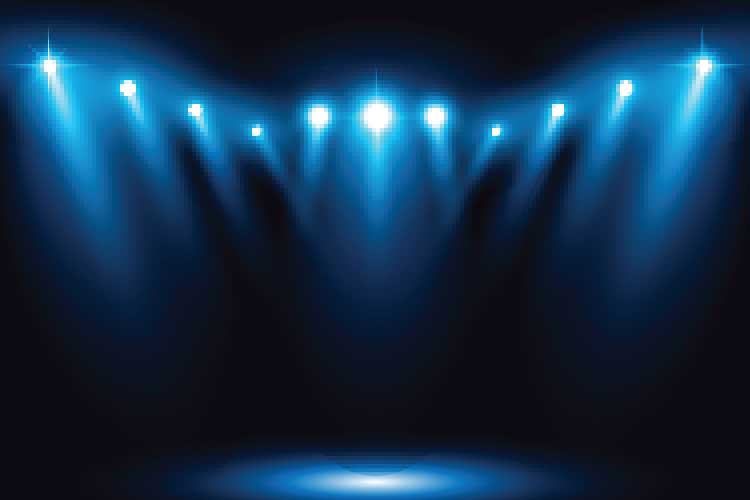Maintain Your Visual Acuity
Studies have indicated a high number of dental hygienists experience some degree of musculoskeletal pain related to their occupation.

Maintain Your Visual Acuity
Studies have indicated a high number of dental hygienists experience some degree of musculoskeletal pain related to their occupation. While there are many causes of this pain, an individual’s visual acuity may play a role. Optimal visual acuity is vital to the assessment of tissue conditions, accurate use of periodontal measurement instruments, and evaluating radiographs. When visual acuity is compromised, a dental hygienist may compensate in a way that could lead to a musculoskeletal disorder (MSD).
Photo Credit: wjenningsphotography / iStock / Getty Images Plus

Effects of Poor Visual Acuity
Pain in the neck and shoulders is commonly reported by dental hygienists. There are many variables contributing to this, but bending the head closer to the patient to obtain better vision could be a contributing factor. Studies have confirmed that tilting the head forward greater than 20° for the majority of a workday leads to an increased risk of neck pain. The forward head posture that is commonly adopted by dental hygienists often causes the muscles, ligaments, and soft tissue to permanently adapt to this posture, leading to postural deformity. The cervical spine can also be affected by this forward head posture. Dental hygienists need to be aware of the recommended positioning during treatment, which is a head tilt between 0° to no more than 20°. It is also important to attempt to maintain that neutral posture for the majority of the workday.
Photo Credit: andriano_cz / iStock / Getty Images Plus

Aging Eyes
Another important aspect of visual acuity is the effect of aging on eyesight. In the natural process of aging, the lens of the eye becomes thinner and less flexible, which makes it difficult to focus on nearby objects. This condition is referred to as presbyopia. In addition to changes in near vision, many individuals find that presbyopia causes an increased need for light and a heightened sensitivity to glare. A study placed dentists in a simulated dental environment to determine their near visual acuity. The results indicated a wide disparity in the quality of near vision among the research participants, with increasing age playing a major factor in the loss of acuity. This loss of vision may contribute to headaches and eye strain. Additionally, dental hygienists tend to compensate for this loss of visual acuity by adopting unhealthy working postures. These changes in near vision may also negatively impact the ability to perform the intricate work that is required in dental hygiene.
Photo Credit: millann / iStock / Getty Images Plus

Magnification to the Rescue
Research has indicated that magnification aids are useful in enhancing visual acuity. A newly released study examined the visual acuity of practicing dental hygienists and dental hygiene students in their clinical settings. Visual acuity was measured with and without magnification aids. The authors concluded that magnification should be used to improve the visual acuity of all dental hygienists and is especially important for those older than 40. Other studies indicate that many dental professionals with visual deficiencies are not aware of the magnitude of their loss. These studies concluded that the use of magnification improved visual acuity and helped to minimize the effects of aging. It was recommended that dental professionals schedule eye exams every 2 years to track any changes in vision.
Photo Credit: paylessimages / iStock / Getty Images Plus

Illuminating the Oral Cavity
Illumination can be used to improve visual acuity. The consensus is that over-illumination can be as harmful to the human eye as inadequate lighting. To evaluate products for usefulness, it is helpful to review how light affects vision. As light enters the eye through the cornea, the iris dilates or constricts, controlling the amount of light that is able to enter the pupil. The light is then refracted to the back of the eye where the image is focused. Adequate light makes it easier for the eye to focus, which improves acuity. However, if too much light is present, the eye’s natural defenses can no longer block the additional incoming light, and glare results. This leads to eye discomfort for the clinician and could be harmful in the long term.
Photo Credit: Ahmad Sya'bani / iStock / Getty Images Plus

Headlight Options
Many dental hygienists are finding that the addition of light-emitting diode (LED) headlights to magnification frames enhances illumination and improves ergonomics in many ways. The most common headlights used today are co-axial LED systems. The function of these systems is to direct a beam of light to the working area, following the head position of the operator to eliminate shadowing. These products can vary considerably in quality and must be carefully evaluated before purchasing. It is important to evaluate the intensity of the light produced and ensure that it can be adjusted to compensate for operator preference. The light must be uniform and clear at the working distance. Lights that emit a beam with a hazy outline are not recommended. Color temperature, which is the color of light produced, is another important consideration. Light sources close in color to neutral sunlight are considered the safest options.

